Dimeria ornithopoda
Trin.
An erect annual grass, between 5-50 cm tall. The leaves arise along the stem (cauline) with leaf blades 0.5-7 cm long and 0.5-3 mm wide and hairy (Fig. 1). The basic flowering units or spikelets are arranged along spike like branches, the flowering head consisting usually of two branches arranged opposite each other (Fig. 2). The flowering heads are either exserted some distance from the leaves or sometimes partially enclosed by the leaf sheath (that part of the leaf which clasps the main stem). The spikelets are shortly stalked and arranged as solitary units along the stem, alternating from one side of the branch to the other, the stem of the branch bent in a zig zag pattern, especially obvious when spikelets have fallen or from the ‘back’ of the branch which is naked of spikelets (Fig. 3a & b). The spikelets are laterally compressed (flattened from one side to the other) so that they appear broadest from the sides. The spikelets are prominently awned, the awn twisted and bent and arising from the lemma is 4-9 mm long.
Botanical Description
A tufted erect annual grass. The leaf sheath is usually hairy The inflorescence is comprised of a pair of spike like branches or racemes held directly opposite each other, or rarely with 3 branches present and sub-digitate, 1.5-6 cm long (Fig. 2); wings along the stem of the branch give it a flattened appearance (Fig. 3b). The spikelets are solitary and arranged on the ‘front’ of the flowering branches but alternate from side to side, with the flowering stem bent to form a zig-zag pattern, the ‘back’ of the stem is naked of spikelets. Spikelets are readily deciduous, (1-)2-3(-4.5) mm long and laterally compressed. A prominent awn is present, 4-9 mm long emerging from the bisexual lemma within the spikelet.
Diagnostic Features Dimeria ornithipoda is distinguished by the combination of the following characters, an annual habit, the flowering head usually consisting of two opposing branches, and awned spikelets arranged as solitary units along the branches of the flowering head, the branch stem shallowly zig zagged. From other species of Dimeria it is identified by either the size of the spikelets or the annual habit. Dimeria chloridiformis (Fig. 4) is a tall perennial species with usually three branches in the flowering head. Dimeria acaciniflormis is very similar but has spikelets usually c. 5 mm long.
Habitat
In Australia this species recorded from Cape York Peninsula, across the Top End of the Northern Territory and into the Kimberley region of Western Australia. Often collected from wet sites and seepage areas, on a variety of substrates, including sandy or clay soils and amongst rocky outcrops of granite or sandstone. Extends to India and Japan.
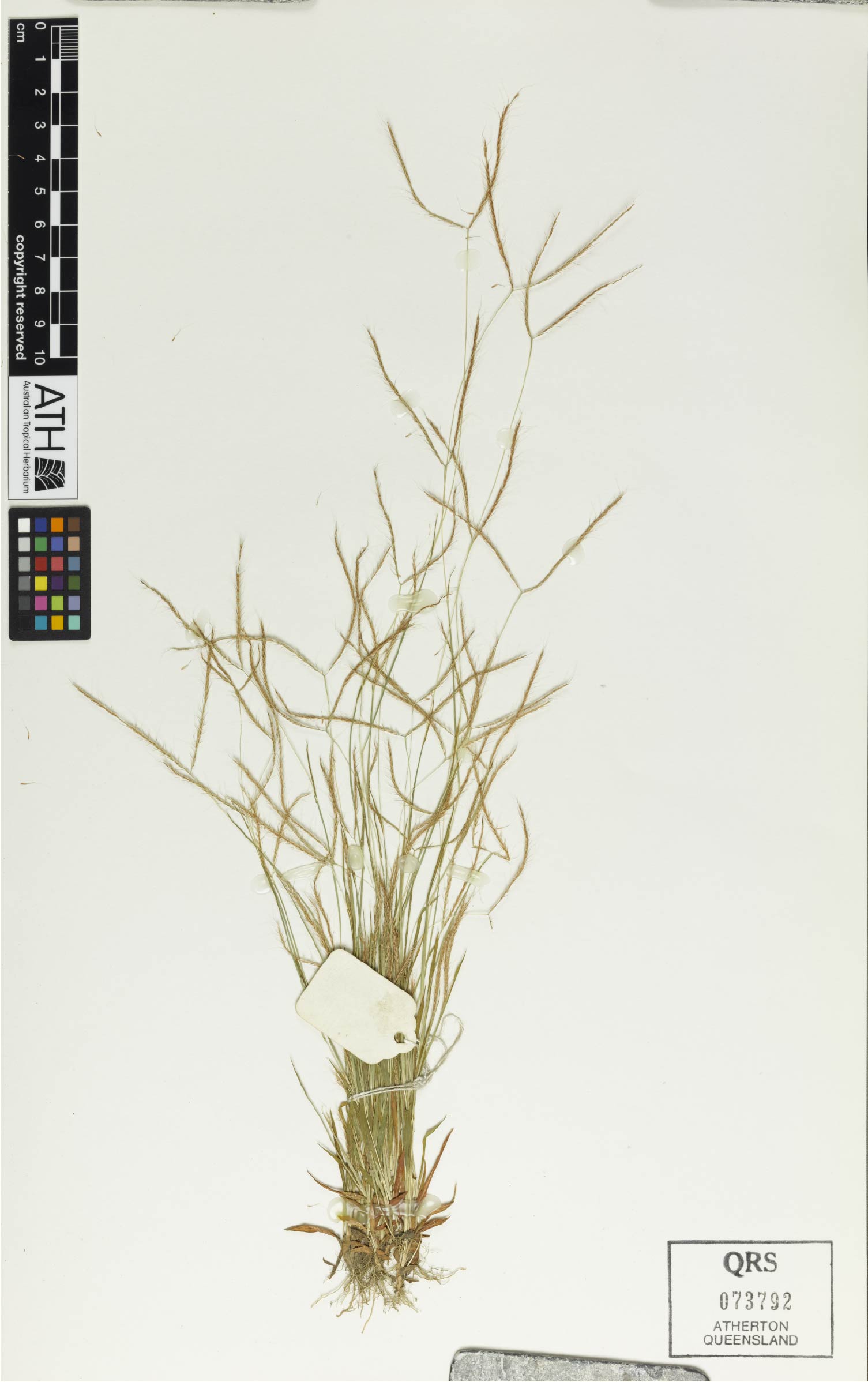
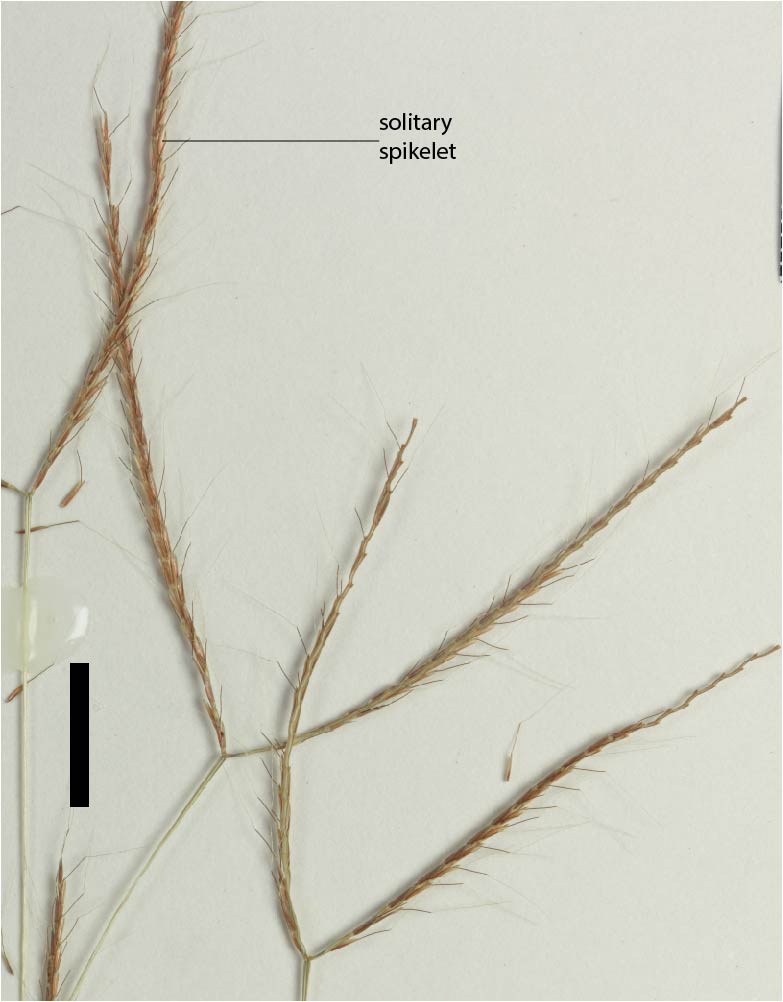
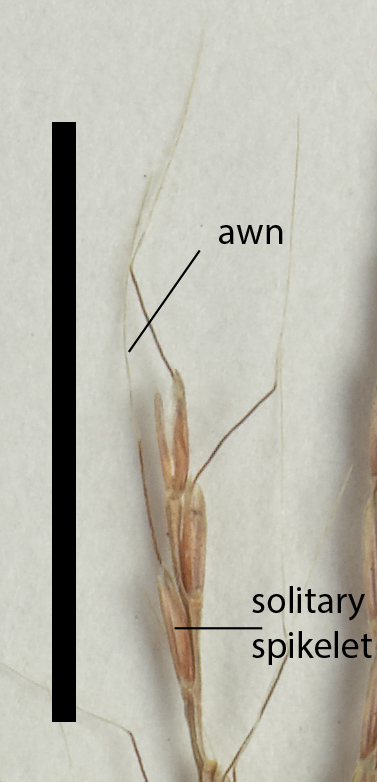
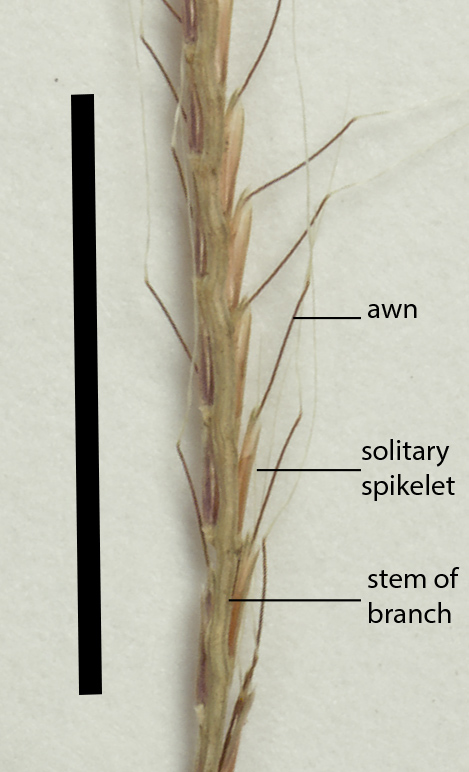
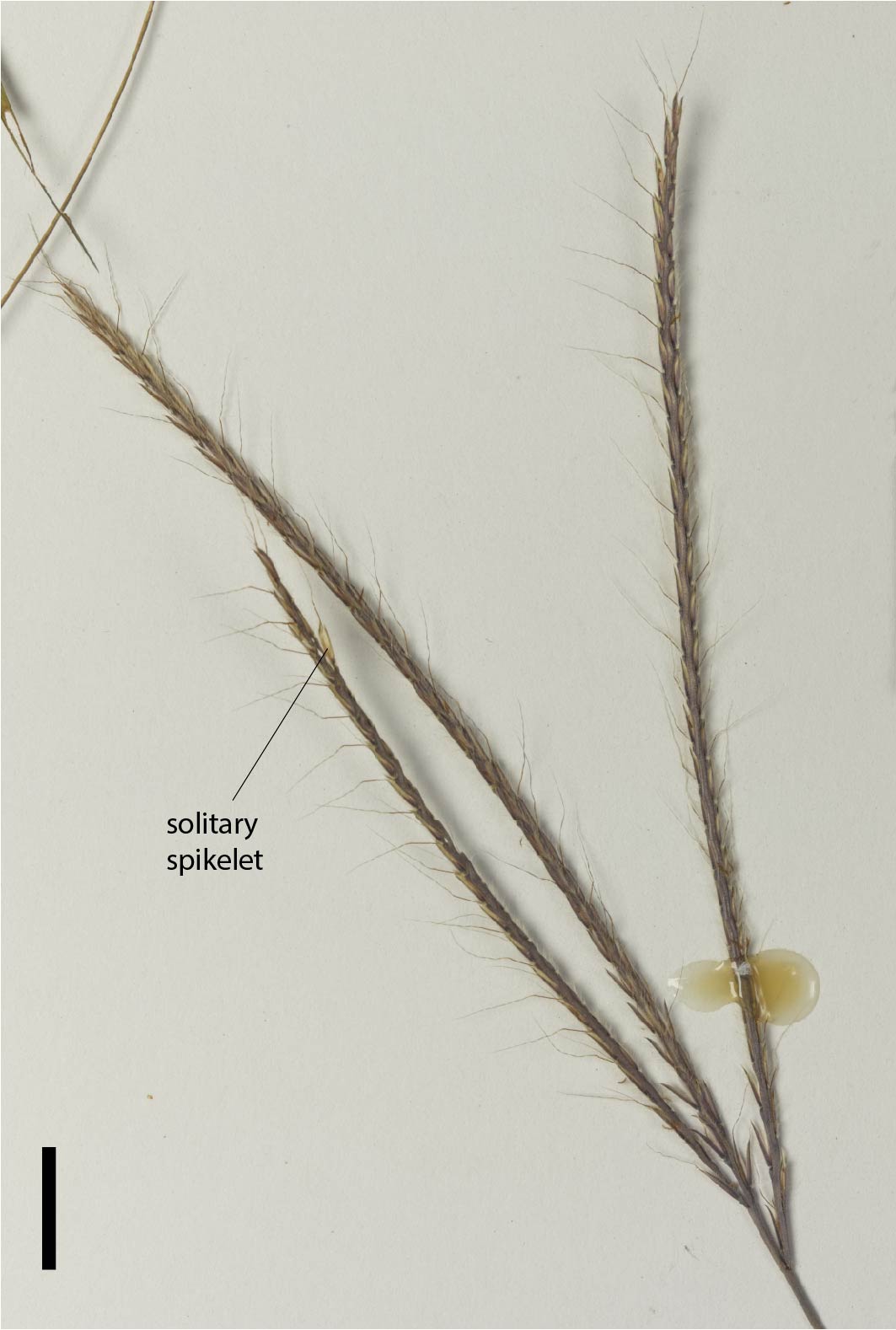
Resources
AVH (2017) Australia’s Virtual Herbarium, Council of Heads of Australasian Herbaria, <http://avh.chah.org.au>, accessed 30 May 2017.
Simon, B.K. & Alfonso, Y. (2011) AusGrass2, http://ausgrass2.myspecies.info/
accessed on [date 29 March 2017]

